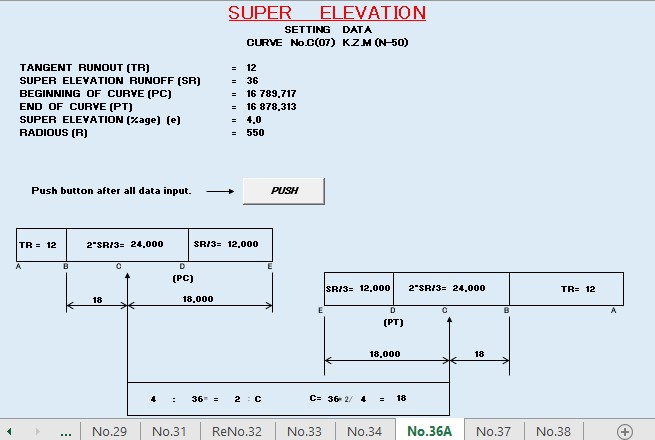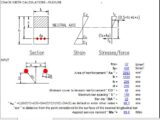
Horizontal Curve Superelevation Calculation Spreadsheet
10 December 2022Table of Contents
Horizontal Curve Superelevation Calculation Spreadsheet
In road design and transportation engineering, horizontal curves present unique challenges. One critical element in ensuring the safety and efficiency of vehicles navigating these curves is superelevation. But what exactly is superelevation, and why is it essential for horizontal curves? In this article, we delve into the concept of superelevation, its design considerations, and its role in improving road safety.
What Is Superelevation?
Superelevation refers to the banking of a roadway at a curve, where the outer edge of the road is elevated higher than the inner edge. This slope helps counteract the centrifugal force that acts on vehicles as they navigate curves, ensuring they stay safely on the road. The angle of banking is carefully calculated to balance these forces for optimal safety and comfort.
Importance of Superelevation in Horizontal Curves
Horizontal curves inherently pose a risk of skidding or overturning due to the lateral forces acting on vehicles. Without proper superelevation, these forces can cause vehicles to lose traction, especially in adverse weather conditions. Superelevation serves multiple purposes:
- Enhances Stability: By tilting the road, superelevation reduces the reliance on tire friction to resist lateral forces.
- Improves Comfort: Drivers experience smoother navigation of curves, reducing fatigue during long drives.
- Prevents Skidding: Proper superelevation minimizes the risk of vehicles sliding off the road, particularly in wet or icy conditions.
- Supports High-Speed Travel: Well-designed superelevation enables vehicles to maintain higher speeds safely.
Designing Superelevation: Key Considerations
The process of designing superelevation involves several critical factors:
- Design Speed: The speed at which vehicles are expected to travel is a primary determinant of the superelevation rate. Higher speeds require steeper banking.
- Radius of the Curve: Tighter curves demand more significant superelevation to counteract sharper centrifugal forces.
- Climate and Weather Conditions: Regions with frequent rain, snow, or ice may require additional considerations to prevent skidding.
- Vehicle Dynamics: The mix of vehicles (cars, trucks, buses) and their weight distribution influence the ideal superelevation angle.
- Drainage Requirements: Superelevation must also account for proper water drainage to avoid pooling and hydroplaning risks.
Calculating Superelevation
The superelevation rate (‘e’) is typically calculated using the following formula:
Where:
- e = Superelevation rate (ratio of road elevation difference to width)
- f = Coefficient of lateral friction
- V = Design speed (m/s)
- g = Acceleration due to gravity (9.81 m/s²)
- R = Radius of the curve (meters)
This formula ensures that the total resisting force (superelevation + friction) equals the centrifugal force acting on the vehicle.
Challenges in Superelevation Design
While superelevation is essential, its implementation can be challenging:
- Urban Constraints: In urban areas, limited space can make it difficult to achieve the desired superelevation.
- Transition Lengths: Gradual transitions are necessary to avoid abrupt changes that can disorient drivers.
- Non-Motorized Traffic: Cyclists and pedestrians may struggle with steep superelevation, requiring balanced designs.
- Maintenance Costs: Ongoing upkeep of superelevated roads can be more resource-intensive.
Real-World Applications
Superelevation is a common feature on highways, mountain roads, and racetracks. It’s particularly crucial in high-speed corridors and areas with frequent curves, such as interchanges and hairpin bends. Advanced tools like simulation software and 3D modeling are increasingly used to refine superelevation designs for modern roadways.
Conclusion
Horizontal curve superelevation is a cornerstone of safe and efficient road design. By carefully balancing forces and considering various environmental and vehicular factors, engineers can create roads that accommodate diverse traffic needs while minimizing risks. Whether you’re a civil engineering student or a curious driver, understanding the science behind superelevation underscores its importance in keeping our journeys safe and smooth.


